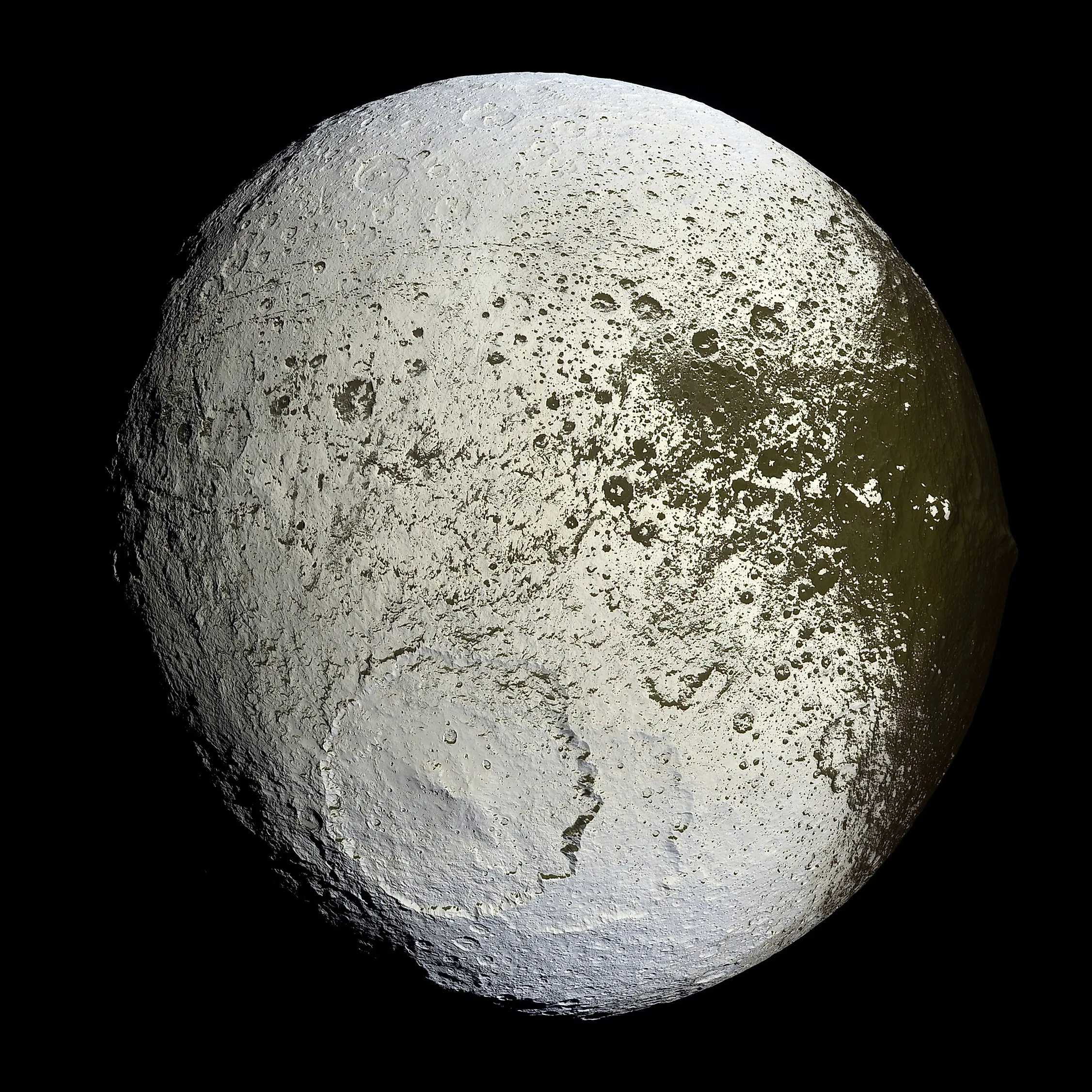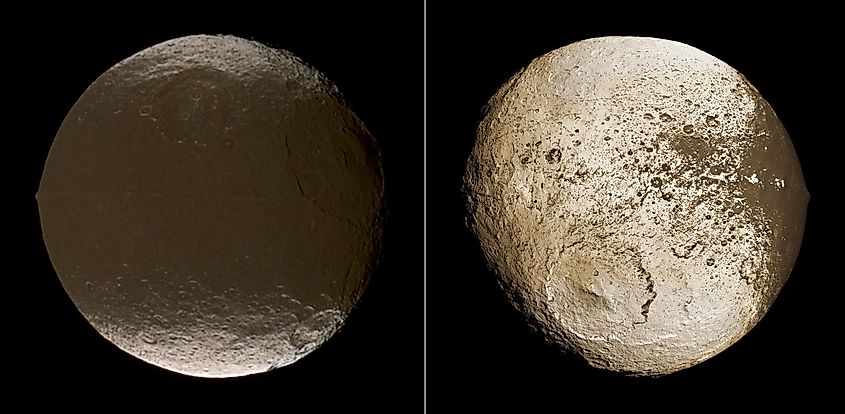
Saturn’s Moon Iapetus
Iapetus is one of the many unique moons of Saturn. Sometimes called the yin and yang of Saturn, Iapetus was discovered by Giovanni Cassini in 1671. Cassini had noticed that he could only see one side of the moon, leading him to the correct conclusion that one side of the moon is covered in some kind of dark material. As you can see in images of Iapetus, the moon seems to be split into two different sections. One side of the moon is white and highly reflective, whereas the other side is dark and absorbs much of the sunlight that hits it. Why does Iapetus have two drastically different hemispheres?
The Two Sides Of Iapetus

Since Giovanni Cassini first discovered Iapetus, scientists have wondered why the moon has a bright side and a dark side. Scientists have proposed numerous explanations. Iapetus may be sweeping up darker particles from another nearby moon called Phoebe. If this hypothesis is true, then the dark material is constantly being renewed over time, which could explain the lack of bright impact craters. If Iapetus formed with its two contrasting hemispheres, we would expect newly formed craters to be brighter or darker depending on what hemisphere they are on, yet craters on the dark hemisphere are also dark, which suggests that the material is being renewed over time. Another explanation is that there might be ice volcanoes on Iapetus that have distributed darker material. Volcanic eruptions could also supply darker materials by ejecting vast amounts of hydrocarbons onto the surface as well.
In 2007, NASA’s Cassini spacecraft discovered a new, more likely explanation. It is very likely that thermal segregation is responsible for the dark material on Iapetus. Iapetus has a fairly long rotation, with the moon taking approximately 79 days to rotate once. With such a slow rotation, Iapetus also experiences long cycles in its surface temperature. The length of its temperature cycles allows the darker region to absorb more sunlight and become noticeably warmer than the brighter hemisphere. This heating of the darker area causes any ice there to sublime out, eventually retreating to the colder side of the moon. This sublimation has resulted in the darker side getting darker and the brighter side getting brighter. The two hemispheres may have once looked similar, with one side being only slightly darker than the other. Over the course of many millions of years, the darker side absorbed more sunlight and got even darker, meanwhile the bright side only got brighter. After many billions of years, we end up with a moon whose two hemispheres look like total opposites.
Orbit, Size, And Composition
Iapetus is the third largest moon of Saturn with a diameter of 913 miles (1,469 kilometres). Iapetus orbits Saturn at a fairly large distance, averaging at 2.2 million miles (3.5 million kilometres). At such a vast distance from Saturn, it takes Iapetus 79 days to complete one orbit. The orbital period of Iapetus is the same as its rotational period of 79 days. Like most moons in the outer solar system, Iapetus is composed mostly of ice, with about 75% of the moon being water ice. The remaining 25% is mostly rock.











